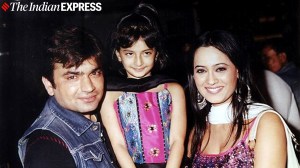To be Young is to Fly in Patterns
This account of Indias urban youth has fine sketches of happy bohemians but settles for easy generalisations
Book: The Butterfly Generation
Author: Palash Krishna Mehrotra
Publisher: Rain Tree
Price: Rs 450
In a country with deep reverence for Mother,Marks and Marriage,rebellion sometimes needs close supervision. Hence,the sit-down rock concert. Where young students in the 80s were frisked of cigarettes and weed,or bottles of rum,and then made to sit down,much like the audience of a Spic Macay recital,as the guitars burnt the night away. We are without doubt the international pioneers of a new genre: sit-down rock n roll, says Palash Krishna Mehrotra with wry exasperation in The Butterfly Generation,a personal,freewheeling account of Indias urban youth.
To be young in a traditional and hierarchical society is to settle for the kind of muddled compromise that results in repressed rock concerts. But The Butterfly Generation is more about the freedom than the fetters,a celebration of the many significant ways the children of liberalisation are snapping their ties with the old order.
Mehrotra has no nostalgia for a simpler time of socialist denial,nor its pious gobbledygook about sex,moral values and culture. This is a generation that finds several things about the family,religion and community stifling or plain silly. The young men and women who flit through the book are creatures of the present; and the city (more accurately,the metropolis) is where they enact their metamorphosis. Away from militaristic fathers and passive-aggressive moms,they discover a life where the codes of work and pleasure are of their own making. They realise that the answers to the questions lie not with family or religion but with the opportunities of capitalism. Aditi is a dancer who knows how to deal with aggressive North Indian men but cannot tell her father about her interests. Versova scriptwriter Amit is stumped when prospective dad-in-law asks: do you have a PAN card? In their imperfect freedoms,the lack of guilt about sex,drugs and fun,their financial independence or even the slow drift into credit-card debt,is a portrait of Indian individualism in the making.
Mehrotra swings along fine with his engaging sketches of happy bohemians,which make up the first section of the book,though he never stays with any character long enough. The rest of the book is a series of essays that attempts to put this change in context. The independence that comes from McJobs? Check. The coming out of gays? Check. Valentines Day as rightist red rag? Check. Analysed ad nauseum in the media,this is well-trodden ground and Mehrotras summaries often read like slapdash op-eds which add nothing new.
They also show up one of the flaws in this first-person narrative: Mehrotra does not cast his net wide enough. The experiences of the South-Delhi-South-Bombay set are too narrow to base generalisations on,and too many of the butterflies flitting through the book are the authors pretty ex-es. Surprisingly,the book has little light to shed on the motivations of modern Indian women,despite the exotic Thumbelinas in it. The reader will have to do with excerpts from Cosmopolitan and Femina,and transcripts of a radio show. There are the same broad-brush strokes in a chapter on servants,where the author seems content to spin his theory by observing Delhi families in a mall burden their maids with shopping bags and inconvenient children. Why not let the maids get a word in?
You stay with the book,though,for Mehrotras sharp insights and droll irreverence. Its no surprise that when Indian kids got into rock music they turned it into another exam. You mugged up difficult chords,revised and revised before the big day,then appeared before an esteemed panel of judges. Even the terminology remained the same. So the IIT music festivals held prelims… Mehrotras remarkable lack of moral judgment makes him spot significant shifts in pop culture when others see sleaze: in the snarkfest on reality TV (Emotional Atyachaar and Roadies),he sees an instance of young Indians acknowledging newer realities of emotional flux. In the chapter on the underground music scene,which talks of stand-ups who laugh at themselves and Savita Bhabhi-inspired anthems,you get a sense of a flowering of Indian modernity,away from the eyes of the mainstream there is an entire book tucked in there. (Ironically,the best chapters in the book are about the author growing up in the 1980s in sleepy UP towns,with Usha Uthup on Doordarshan and music shop owners who have not heard of Roxette.)
The book ,though,underestimates the instinct for conformism that drives the butterfly generation to IIM coaching centres and shaadi.com. It is simplistic in its assertion that the divisions of caste and gender become irrelevant on shiny work-floors. The Butterfly Generation is a patchy effort,never wholly satisfying,but one which shows you a generation in flight,on its terms.
Photos





- 01
- 02
- 03
- 04
- 05


























